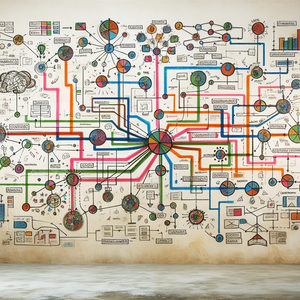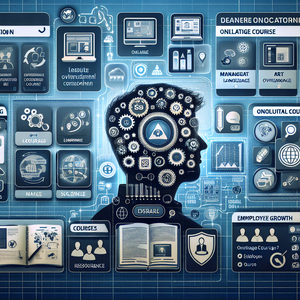From Factory Floors to Virtual Realities: How Reskilling is Redefining Work in the Age of Automation

Automation and AI are reshaping the workplace, offering businesses unprecedented levels of efficiency and cost savings. According to the World Economic Forum’s 2023 report, automation could displace 85 million jobs by 2025, but it is also expected to create 97 million new roles requiring new skills. This paradox highlights both the disruptive potential of automation and the opportunities it provides for workers willing to adapt. For industries built on manual labor—such as manufacturing, logistics, and construction—the threat of job displacement is especially acute. Machines are increasingly performing tasks once done by humans, from assembling products on factory floors to driving vehicles. Yet, automation does not signal the death of work. Instead, it signals a transformation in the nature of work. Roles that demand creativity, critical thinking, and human-machine collaboration are on the rise. For example, while factory workers may no longer manually assemble products, they may find opportunities in programming robotic machinery, analyzing production data, or troubleshooting automated systems. The challenge for workers is clear: they must develop the technical and soft skills needed to thrive in a digital-first economy.
The Role of Demographic Shifts in Reskilling
Demographic trends are further complicating the workforce transformation. Aging populations in countries like Japan, Germany, and the United States mean that workforces are shrinking while demand for skilled labor continues to rise. As older workers remain in the labor market longer, they must adapt to rapidly changing technologies—often learning alongside younger colleagues who grew up in a digital-first world. This dynamic creates a dual challenge: businesses must address the technological skill gaps among older workers while also preparing younger generations for roles that may not yet exist. Governments and employers have a vested interest in ensuring no demographic is left behind, as the cost of inaction would result in lost productivity, increased unemployment, and widening income inequality.
Stories of Transformation: Reskilling in Action
The shift from traditional jobs to digital careers can seem overwhelming, but countless individuals have turned this challenge into an opportunity. Their stories illustrate how reskilling can open doors to new possibilities. Take Maria Gonzalez, a 52-year-old assembly line worker in Spain. After her factory downsized due to automation, Maria feared her career was over. However, through a government-funded reskilling program, she learned coding and data management skills. Today, Maria works as a data analyst for a renewable energy company, blending her newfound technical expertise with her years of industry experience. Similarly, James Carter, a former coal miner from West Virginia, faced a daunting reality when his mine shut down. Instead of dwelling on the loss of his livelihood, James enrolled in a technology boot camp designed for displaced workers. Within six months, he gained the skills needed to operate and repair automated machinery. Today, he works as a technician for a robotics company, maintaining the very machines that replaced his former job. These stories underscore the power of reskilling to transform lives and careers. While the journey may be challenging, the rewards are often worth the effort.
Practical Strategies for Reskilling
Reskilling involves more than learning new technical skills—it requires a mindset shift. Workers, employers, and policymakers must take proactive steps to prepare for the future of work. Here are some strategies: 1. Identify Transferable Skills: Even in industries undergoing automation, workers bring valuable skills—such as problem-solving, teamwork, and attention to detail—that can be applied in new roles. Identifying and leveraging these transferable skills can ease the transition to digital careers. 2. Take Advantage of Online Learning Platforms: Platforms like Coursera, Udemy, and LinkedIn Learning offer affordable and flexible courses in areas ranging from basic computer literacy to advanced AI programming. These resources make it easier for workers of all ages to upskill or pivot into new fields. 3. Participate in Reskilling Initiatives: Many governments and employers are investing in reskilling programs to bridge skill gaps. For example, Singapore’s SkillsFuture initiative provides citizens with credits to pursue courses in high-demand fields, while companies like Amazon have pledged billions to upskill employees through internal training programs. 4. Embrace Lifelong Learning: The traditional model of education—earning a degree and remaining in the same profession for decades—is no longer viable. Workers must adopt a mindset of continuous learning, staying curious and adaptable as industries evolve. 5. Strengthen Soft Skills: While technical skills are essential, soft skills like emotional intelligence, adaptability, and communication are equally important. These skills enable workers to collaborate effectively, navigate change, and lead in dynamic environments.
The Responsibility of Employers, Governments, and Society
Reskilling cannot fall solely on individual workers. Employers, governments, and educational institutions all play critical roles in preparing the workforce for a digital future. Employers should invest in training programs, mentorship opportunities, and internal mobility to help workers transition to new roles. Providing on-the-job training ensures that employees can learn while earning a paycheck. Governments must support reskilling initiatives through funding, tax incentives, and public-private partnerships. Policies that promote equitable access to training programs are particularly important for addressing disparities among underrepresented groups. Educational Institutions must revamp curricula to reflect the demands of the digital economy. This includes emphasizing technical skills while fostering creativity, critical thinking, and problem-solving abilities. By working together, these stakeholders can create a future in which workers of all ages and backgrounds have the tools they need to succeed.
The rise of automation and the impact of demographic shifts may seem daunting, but they also mark the beginning of a new era of opportunity. The journey from factory floors to virtual realities is not just about adapting to change—it’s about embracing it as a catalyst for growth and innovation. Reskilling offers workers the chance to unlock new potential, transition into meaningful careers, and remain relevant in a rapidly evolving job market. With the right support from employers, governments, and society, we can build a more inclusive, adaptable workforce that thrives in the digital age. As we navigate this transformation, the key to success lies in embracing lifelong learning, fostering a growth mindset, and viewing automation not as a threat, but as a pathway to reinvention. The future of work is here, and with the right skills and mindset, it’s a future full of promise.
Robotics Technician
Industrial manufacturers (e.g., Siemens, General Motors, Amazon Robotics)
Core Responsibilities
Operate, maintain, and troubleshoot industrial robots used in manufacturing and logistics settings.
Collaborate with engineers to install and program robotic systems for specific applications.
Perform preventive maintenance and identify potential issues to minimize downtime.
Required Skills
Proficiency in robotics programming languages like RAPID or KUKA KRL.
Strong mechanical and electrical troubleshooting skills.
Certification in robotics or mechatronics is often preferred (e.g., FANUC or ABB certifications).
Data Analyst in Manufacturing
Automotive companies, consumer goods manufacturers, and energy firms (e.g., Ford, Procter & Gamble, GE)
Core Responsibilities
Analyze production data to optimize manufacturing processes and improve efficiency.
Develop dashboards and visualizations to monitor key performance indicators (KPIs) in real-time.
Identify trends and anomalies in data to predict and prevent equipment failures.
Required Skills
Expertise in tools like SQL, Tableau, and Python for data analysis.
Understanding of manufacturing processes and systems like SCADA or MES.
Strong problem-solving skills and ability to communicate technical insights to non-technical stakeholders.
AI/ML Model Trainer
Tech companies, startups, and research labs (e.g., Nvidia, OpenAI, Google)
Core Responsibilities
Train machine learning models to perform tasks such as natural language processing, computer vision, or predictive analytics.
Annotate and curate datasets to ensure high-quality inputs for AI training.
Collaborate with data scientists and software engineers to refine model performance.
Required Skills
Familiarity with AI tools like TensorFlow, PyTorch, or Scikit-learn.
Knowledge of data preprocessing techniques and annotation tools.
Strong attention to detail for ensuring data accuracy and consistency.
Human-Machine Interaction Specialist
Robotics firms, industrial design agencies, and smart factory consultants (e.g., Boston Dynamics, Honeywell, Deloitte)
Core Responsibilities
Design and optimize user interfaces for workers interacting with automated systems or robots.
Conduct usability testing to improve the efficiency and safety of human-machine collaboration.
Develop training programs to help workers effectively use new technologies in their roles.
Required Skills
Knowledge of UX/UI design principles and tools like Figma or Adobe XD.
Familiarity with ergonomics and designing for workplace safety.
Strong communication skills to bridge the gap between technical teams and end-users.
Reskilling Program Manager
Government agencies, non-profits, and corporations with internal upskilling initiatives (e.g., Amazon, Microsoft, Workforce Development Boards)
Core Responsibilities
Design and implement training programs to help workers transition into tech-forward roles.
Partner with government agencies, educational institutions, and private companies to deliver upskilling initiatives.
Monitor program outcomes and adjust curricula to align with workforce demands.
Required Skills
Expertise in workforce development and adult learning methodologies.
Strong project management skills and experience with learning management systems (LMS).
Knowledge of emerging job market trends and high-demand skills (e.g., AI, cloud computing).


